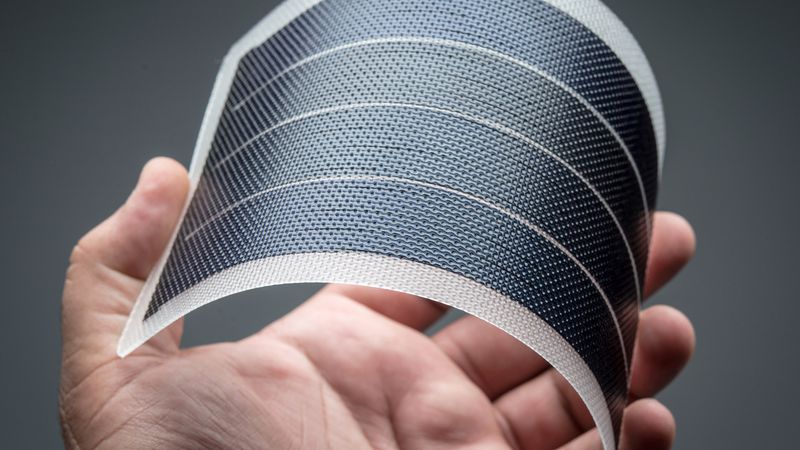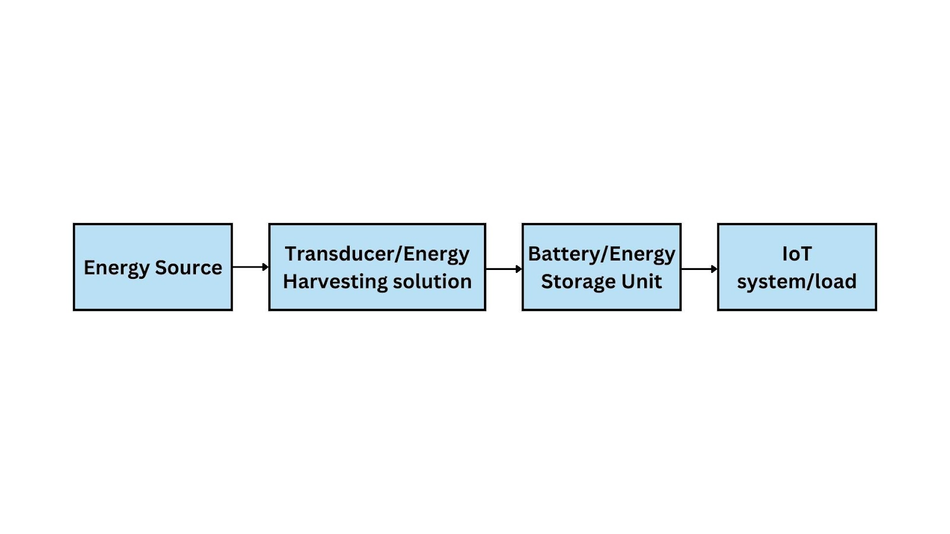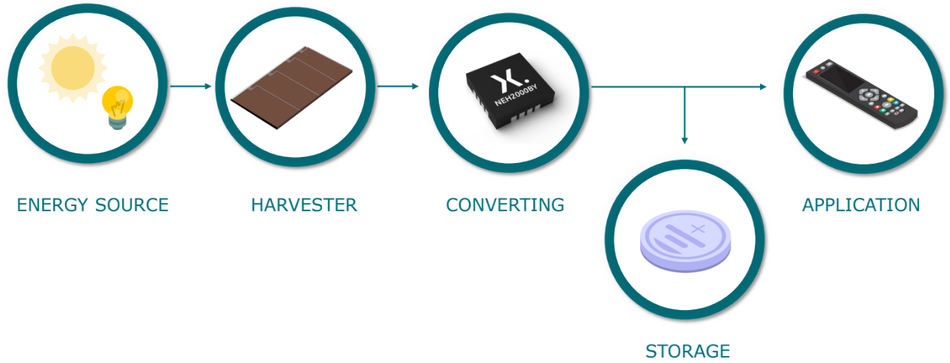Evaluating the Feasibility of Energy Harvesting for IoT Products
Energy harvesting for IoT provides a sustainable power solution, enabling self-sufficient devices that extract energy from their surrounding environment, enhancing longevity and reducing maintenance requirements

Photo by Adafruit Industries on flickr
The Internet of Things (IoT) is reshaping our interaction with the physical and digital worlds. From healthcare to home automation, billions of connected devices are collecting, exchanging, and analyzing data. However, this rapid proliferation of IoT devices raises significant concerns about energy management. The challenge lies not just in meeting these escalating power needs, but doing so sustainably and efficiently.
In this article, we guide you through the evaluation process to ascertain the feasibility of energy harvesting for IoT devices. We'll delve into various energy harvesting methods, analyze their strengths and limitations, and discuss the role communication protocols play in energy management. This is not a one-answer-fits-all discussion, but an exploration that enables you to make informed decisions for your specific IoT requirements.
Energy Harvesting Methods for IoT Devices
Energy harvesting, alternatively known as power harvesting or energ y scavenging, encapsulates the process of capturing small amounts of energy that would otherwise be lost as heat, light, sound, vibration, or movement. In a typical energy harvesting solution for an IoT device, the process starts with an energy source like solar, wind, or vibrations. This raw energy is captured by the transducer or energy harvesting solution which converts it into a usable form of electrical energy.
The converted energy is then stored in a battery or some other energy storage unit, serving as a buffer. This is crucial because energy harvesting, like from a PV cell, doesn't always align with the consumption patterns of the load device. There can be times when the energy harvested is insufficient or inconsistent, and that's where the storage unit plays its vital role. By accumulating energy over time, the storage ensures there's a steady supply available for the IoT system or load when required, allowing it to perform its intended functions seamlessly.for later use. Finally, the stored energy is used to power the IoT system or load, enabling it to perform its intended functions.
Here are some energy harvesting techniques used for powering IoT devices:
Light Energy Harvesting (Solar): Leveraging photovoltaic cells, this method transmutes sunlight into electricity. Through a process known as the photovoltaic effect, when sunlight hits the cells, it may be absorbed, causing electrons to be knocked loose and create an electric current. While heavily reliant on the availability of sunlight, advancements in material sciences have led to more efficient photovoltaic cells capable of producing energy even under lower light conditions.
Thermal Energy Harvesting: Capitalizing on the Seebeck effect, thermal energy harvesting exploits temperature gradients to generate electricity. A thermoelectric generator uses this effect, wherein a temperature difference between two sides of the material generates a voltage difference, producing electrical power. The efficiency of this process depends on the thermoelectric material's properties and the temperature difference. This method finds utility in industrial environments with significant temperature disparities.
RF Energy Harvesting: Tapping into ambient electromagnetic waves, particularly in the RF band, RF energy harvesting converts these waves into DC electricity. These harvesters capture energy from ambient RF sources such as Wi-Fi signals or radio broadcasts. While traditionally low-yielding, recent advancements in RF energy harvester design and ultra-low-power IoT devices have improved its feasibility.
Bio/Chemical Energy Harvesting: Bio/chemical energy harvesting uses biochemical reactions, like diffusion or radioisotopes, to generate power. Microbial fuel cells, for instance, employ bacteria to convert chemical energy into electrical energy, while other methods use human body fluids or other biological sources.
Kinetic Energy Harvesting: A diverse sub-category, kinetic energy harvesting encompasses multiple strategies that transform mechanical energy into electrical energy. These include:
Piezoelectric Energy Harvesting: It exploits material stress to generate voltage. Piezoelectric materials generate an electric charge in response to mechanical stress, which can be used to generate power from environmental vibrations or changes in pressure.
Electrostatic Energy Harvesting (Capacitive with and without electrets): Leveraging variable capacitance, this method involves movement of the plates or the dielectric of a capacitor, which generates a current. It's an effective way to harvest energy from motion.
Electromagnetic Energy Harvesting (Electrodynamic): Utilizing Faraday's law of electromagnetic induction, a magnet is rotated to induce a current in a nearby coil of wire. This method effectively captures energy from environmental vibrations, rotational motion, and hydro energy.
Triboelectric Energy Harvesting: This method generates power from the contact or rubbing together of two different materials, which generates a charge difference due to the triboelectric effect.
Each energy harvesting method presents unique advantages and constraints, and the choice of which to employ depends largely on the specific application and environment. Yet, collectively, they represent a significant stride toward more sustainable and self-sufficient electronic devices.
Capabilities of different energy harvesting techniques
For an IoT application to consider adopting an energy harvesting technique, the method should be capable of generating power in the magnitude of a few milliWatts. Given the diversity of energy harvesting methods available, quantifying their potential energy production is essential. The following table provides a comparative analysis of the minimum and maximum energy production capabilities for these methods.
Energy Harvesting Technique | Potential Energy Production | Possible applications/scope |
Thermoelectric | 10 μW - few KW | Widespread production |
Photovoltaic | 1 μW - several MW | |
Electrodynamic | 0.1 μW - 1 MW | |
Piezoelectric | 10 μW - 100 W | |
Capacitive electrets movement harvesting | 0.1 μW - 1 mW | Research |
Pyroelectric | 0.1 μW - 1 mW | |
Capacitive without electrets | 0.1 μW - 1 MW | |
Triboelectric | 0.1 μW - 1 MW | |
RF waves | 0.1 μW - 1 mW | Limited production |
Magnetostrictive | 10 μW - 1 MW | Major trials |
Energy harvesting is a dynamic and rapidly advancing field, with new research and technological improvements being made all the time. Therefore, any specific numbers provided could become outdated relatively quickly.
Furthermore, energy harvesting devices are typically designed to meet the requirements of specific applications, so the energy they generate can vary widely. For example, a solar panel used for a rooftop installation is designed to produce as much power as possible and may generate kilowatts of power, while a solar panel designed to power a small sensor or device might only need to generate milliwatts or even microwatts of power.
Determining the Appropriateness of Energy Harvesting for Your IoT Project
When selecting an energy source for an IoT project, both the expected device lifespan and its energy requirements are pivotal. Solar energy, given its abundance, often emerges as a viable contender.
For devices meant to operate for brief periods, solar energy's reliability might waver, especially during cloudy days or nights. It's necessary for these devices to have good energy storage to handle such inconsistencies.
Over longer timespans, the sun's intermittent availability becomes less of an issue, but maintaining adequate energy storage remains crucial.
If you're planning to build devices that are required to last a very long time, it's also worth weighing the costs and reliability of traditional batteries against energy harvesting methods. Here are some other key points to keep in mind and consider when choosing an energy harvesting technique for IoT projects:
Application Requirements: Understand the energy requirements of your application. This includes determining average and peak power demands, required voltage and current levels, and understanding the duty cycle for appropriately sizing energy storage and management components.
Energy Source Identification: Identify the most appropriate energy source based on its distinct characteristics and suitability for the application.
Energy Availability Evaluation: Assessing the available energy from a chosen source within the application's environment is a crucial step. For instance, if light energy is to be harvested, understanding both the intensity of the available light and the duration for which it will be accessible can significantly impact the efficiency of the harvesting process. Moreover, it's vital to analyze the adaptability of the energy harvesting system to shifts and fluctuations in the environment.
Energy Conversion Efficiency Assessment: The efficiency of the energy conversion technology is crucial for maximizing the harvested energy.
Storage and Management Consideration: Select suitable energy storage components and design energy management circuits to control power flow and ensure overall system efficiency.
System Reliability Analysis: Perform failure mode and effects analysis (FMEA) to identify potential weaknesses and develop fault tolerance strategies.
System Size and Weight Evaluation: Optimize the system's physical size and weight to ensure its integration without causing space constraints or excessive weight.
Cost Analysis: Perform a comprehensive cost analysis that considers components, manufacturing, maintenance, and end-of-life disposal costs. Additionally, it's essential to account for other factors such as ownership costs and potential resale value in the overall financial assessment.
Integration and Compatibility: Ensure that the energy harvesting system seamlessly integrates with the application's existing electronics and sensors.
Safety and Compliance: Implement safety measures and comply with relevant safety and environmental regulations.
Prototype and Testing: Create a functional prototype for real-world testing and validation.
Comparison of Communication Protocols
While evaluating the suitability of energy harvesting methods for IoT applications, it's crucial to also consider the energy efficiency of data transmission. Different communication protocols, like BLE, WiFi, Zigbee, etc., have varying data rates, ranges, and power consumptions. Thus, our next focus, as we aim for optimized energy use, is the strategic choice of a suitable protocol and its impact on an IoT device's overall energy efficiency.
Choosing the right communication protocol is pivotal, affecting not only data transfer capabilities but also power consumption. Here, we examine BLE (Bluetooth Low Energy), WiFi, and Zigbee, three popular options extensively used in IoT applications.
BLE: With a maximum data transfer rate of up to 2 Mbps and an optimal range that can be extended to 400 meters, BLE is designed for short-range communication. It operates with lower power requirements (0.01 - 0.5 W), making it ideal for periodic small data transmission and maintaining longer battery life.
WiFi: WiFi 6 has a higher data transfer rate of up to 9.6 Gbps and an average range of about 50 meters indoors (and up to 100 meters outdoors). It does consume significantly more power (2 - 10 W), but it's suitable for devices that need constant internet access and aren't far from a power source.
Zigbee: Zigbee, with a data transfer rate of up to 250 kbps and a range of up to 100 meters, provides a good balance of range, power consumption (0.001 - 0.03 W), and data transfer rate. It's particularly suitable for creating mesh networks of devices that share and relay information.
Communication Protocol | Power Requirements | Data Transfer Rates | Range |
BLE (Bluetooth Low Energy) | Low power (can run on a coin cell battery for months to years) | 0.125 Mbps - 2 Mbps | Approx. 100 m (328 ft), can be extended to 400 m (1312 ft) |
Bluetooth (v5.3) | Moderate (depends on the device, typically lower than WiFi) | Up to 3 Mbps | Up to 200 m (656 ft) in ideal conditions |
WiFi 6 | High (compared to other protocols listed, but depends on device and usage) | Up to 9.6 Gbps (theoretical max) | Approx. 50 m (164 ft) indoors, up to 100 m (328 ft) outdoors |
ZigBee | Low power (suitable for battery-operated devices) | Up to 250 kbps | 10-100 m (33-328 ft) depending on power output and environmental factors |
LoRa (Long Range) | Extremely low power (ideal for battery-operated IoT devices) | 0.3 kbps to 50 kbps | 2-5 km in urban areas, up to 15 km in suburban areas |
Challenges of Energy Harvesting in IoT
The implementation of energy harvesting for IoT devices, while promising, does present several key challenges:
Limited Power Capacity and Efficiency: Energy harvesters typically have a low conversion efficiency, and restricted power storage capacities, making them applicable primarily to low-power IoT devices. However, the integration of a battery alleviates this limitation, making them more versatile for diverse applications. High-temperature operation, particularly for thermoelectric energy harvesters, remains problematic, although advancements in nanostructured materials offer hope.
High Entry Costs: The initial production and implementation costs of energy harvesting systems including the Bill of Materials (BOM) for the energy harvesting power management integrated chips (PMICs), are significant. This can deter widespread adoption. The cost-benefit ratio needs to be favorable, and at present, this is not always the case, especially for low-cost IoT devices.
Unstable Energy Output: Energy harvesting systems often produce inconsistent power output, varying with the availability and intensity of the energy source. This instability necessitates additional components for power regulation and the inclusion of Maximum Power Point Tracking (MPPT) mechanisms, further adding to system complexity and cost. MPPT refers to a technique used to optimize the amount of power drawn from solar panels or other renewable energy sources, ensuring the most efficient energy conversion.
Standardization and Interoperability Concerns: The lack of standardized metrics to evaluate energy harvesting technologies impedes their acceptance. Universally recognized standards are required for manufacturers and consumers to accurately compare the efficiency of various energy harvesters. Initiatives like the Metrology for Energy Harvesting Project are working towards this goal.
Market Awareness and Education: A lack of awareness about energy harvesting technology among potential users impedes market penetration. Greater industry efforts are required to educate consumers and professionals about energy harvesting principles and benefits.
Addressing these challenges is crucial to unlock the full potential of energy harvesting for IoT applications, necessitating ongoing research, development, and industry-wide collaboration.
Building a Sustainable IoT Energy Harvesting Solution with Nexperia’s High-Performance Power Management ICs
The NEH2000BY from Nexperia is an optimal energy harvesting solution engineered for low-power applications. This powerful component derives energy from a photovoltaic (PV) cell and utilizes this harvested energy to charge a rechargeable battery.
One of the distinct features of the NEH2000BY is its advanced Maximum Power Point Tracking (MPPT) that utilizes a sophisticated hill-climbing algorithm. This algorithm maximizes the power output to the load. Impressively, the MPPT is adaptable to any harvester that fits the specifications of the chip, making it highly versatile. It boasts a speedy interval of 0.7 seconds for detecting the maximum power point, ensuring optimal efficiency in rapidly changing energy environments.
The NEH2000BY comes in a compact 16-terminal Quad Flat Package, measuring just 3mm x 3mm. This powerhouse offers high-efficiency low-power 2x boosting and can harvest power ranging from 35µW to 2mW. It features a minimal bill of materials with no external inductor needed, making it an economical choice for various applications. Compatibility with various types of rechargeable batteries further enhances its versatility, making the NEH2000BY a go-to choice for a multitude of IoT applications.
References
[1] Conflow Power Group. (2023). Market Research on Energy Harvesting for IoT Device. Available at: https://assets.website-files.com/6225ec4d016842cb92d1e5d3/629151680aab9776a55aaad2_Conflow-Energy-Harvesting-Report.pdf
[2] Sharma A, Sharma P. Energy Harvesting Technology for IoT Edge Applications [Internet]. Smart Manufacturing - When Artificial Intelligence Meets the Internet of Things. IntechOpen; 2021. Available from: http://dx.doi.org/10.5772/intechopen.92565



